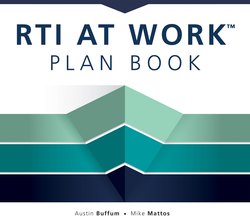Читать книгу RTI at Work™ Plan Book - Austin Buffum - Страница 12
На сайте Литреса книга снята с продажи.
ОглавлениеThe Essential Responsibilities of Teacher Teams
Collaborative teacher teams are the engines that drive a school’s RTI efforts. Collaborative teacher teams comprise educators who share essential curriculum and, thus, take collective responsibility for students learning their common essential learning outcomes. Because the uniting characteristic of teacher teams is shared learning outcomes, the most common and preferred structures would be grade-level teams at the elementary level and course-based teams at the secondary level. However, it is likely that every school has singleton educators, who are the only people teaching a specific grade, course, or subject. When this is the case, the following structures can be effective ways to form teams.
▶ Vertical teams: Vertical teams share common learning outcomes developed across consecutive years of school.
▶ Interdisciplinary teams: Interdisciplinary teams comprise teachers who teach different subjects. While interdisciplinary teams do not share content standards, they can focus their team efforts on shared essential skills.
▶ Regional and electronic teams: It is possible that the previous teaming options might not work for a specific faculty member. When this is the case, it is unlikely that this educator is the only person in the district, county, region, state or province, or country who teaches that curriculum content. Forming collaborative teams beyond the site is an option. This collaboration most likely requires virtual team meetings.
While there are numerous ways to structure teacher collaborative teams, all these structures have one characteristic in common—if the purpose of school collaboration is to improve student learning, then team members must share data on student-learning outcomes.
The responsibilities of each teacher team in the RTI process are to:
• Clearly define essential student learning outcomes
• Provide effective Tier 1 core instruction
• Assess student learning and the effectiveness of instruction
• Identify students in need of additional time and support
• Take primary responsibility for Tier 2 supplemental interventions for students who have failed to master the team’s identified essential standards (Buffum et al., 2012, p. 33)
We visually capture teacher team responsibilities at Tier 1 and 2 in the upper, right-hand portion of the RTI at Work pyramid.
Assessing Your Current Team
As previously mentioned, collaborative teacher teams are the engines that drive the PLC at Work process. When these teams are highly engaged in the right work, student learning accelerates forward—and when they are not, learning sputters and stalls. Because teachers have traditionally been required to attend grade-level or departmental team meetings, schools often mistakenly assume that merely renaming these gatherings PLC Time represents teacher collaboration. The act of meeting together does not make a team, but instead merely a group. What is the difference? Stated simply—groups coordinate, while teams truly collaborate!
